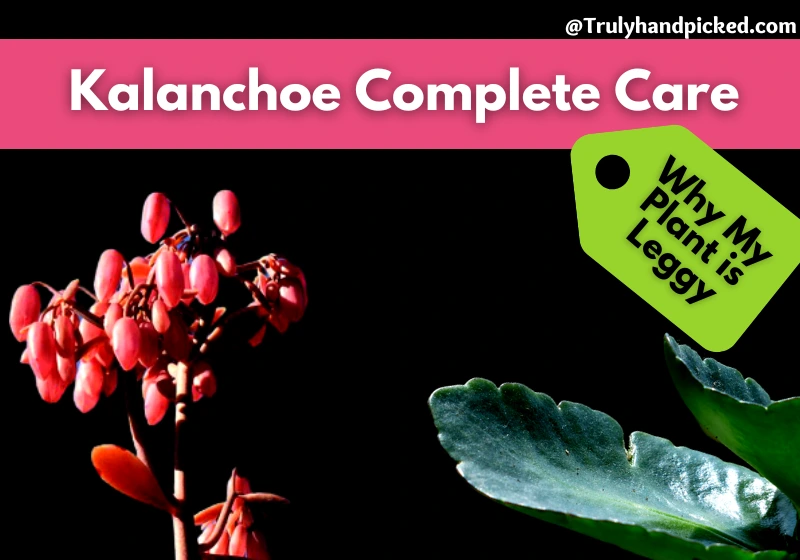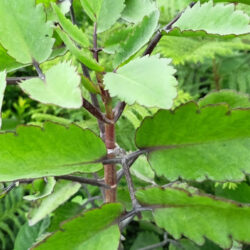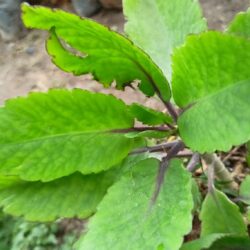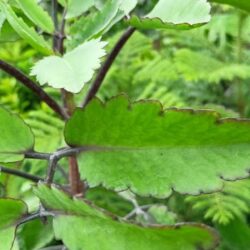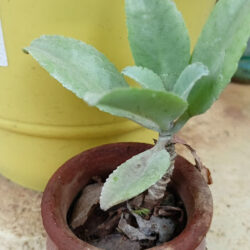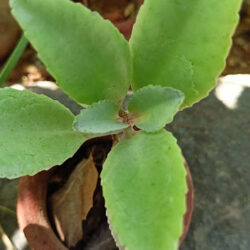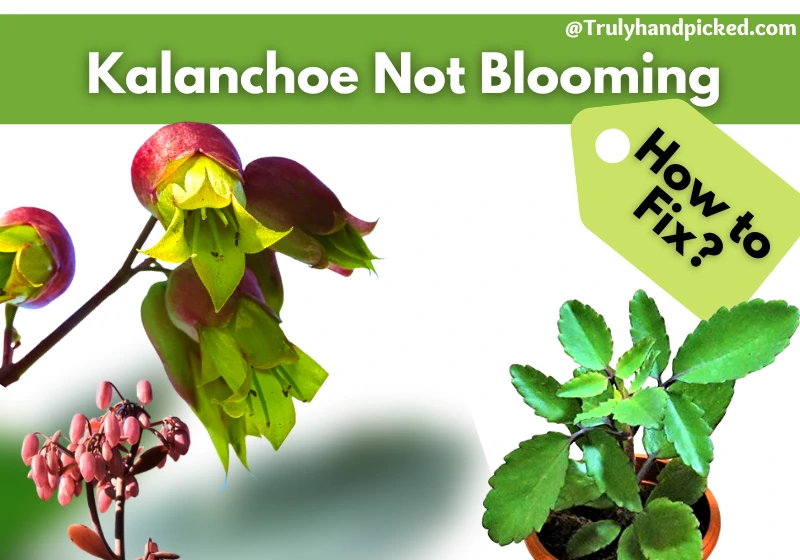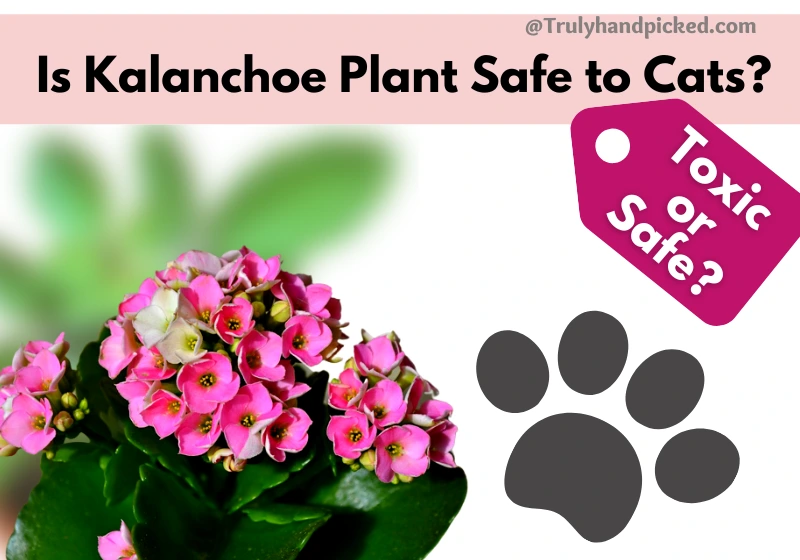Kalanchoe is a common flowering plant with attractive variegated flowers. This is a genus of 125 species of tropical flowering plants.
Kalanchoe plant belongs to the Crassulaceae family and is native to the extremely warm climate of tropical Africa. Due to being a hardy acme succulent, kalanchoe is easy to grow in outdoor garden areas.
However, you can cultivate some species indoors, if you can tend them well. They produce blossoms in many variations and shades, thus, kalanchoe plants could be a great piece to decorate your house interior exotically.
Let’s learn some important growing and caring tips for the kalanchoe plant in our discussion below-
Kalanchoe Complete Plant Care: Quick Tips
Soil: Kalanchoe plant prefers well-aerated potting soil that could drain excellently. Make the soil balanced enough with a mixture of peat moss, as well as perlite, with normal potting soil and keep the pH level slightly acidic.
Water: This succulent is moderately thirsty. So, for a growing kalanchoe plant water once every 2-3 weeks indoors and outdoors weekly once. You can check the topsoil surface of the plant, and water it when the top 2 inches turn completely dry only.
Fertilizer: Kalanchoe plants are low-feeder. Hence, try to feed your plant only during the growing seasons, like spring and early summer. Apply the fertilizer in diluted form and use a cactus mix or citrus mix fertilizer for the best result.
Sun Exposure: As the kalanchoe plant is of tropical origin, it thrives best under bright sunlight with full sun exposure. If you are growing it indoors, try to put the planter near the windowsill to provide bright light consistently.
Climate: Maintain a stable temperature between 50° to 70° F during the daytime, and don’t let the temperature fall less than 45° F, even during the night. Kalanchoe plant claims high humidity of around 75-80% during the entire growing condition.
Pruning: You have to prune a growing kalanchoe plant often, as it is a bushy succulent. Trim the plant once or twice every year with a disinfected pruner or shear. Pinch off the dead or dying blooms, along with infected or discolored old foliage, during this time.
Repotting: A kalanchoe plant doesn’t grow much length-wise or doesn’t have a wider root system. Thus, you don’t need to repot the plant often. Try to do it only when the plant is overgrowing its current planter apparently. Use any terracotta planter that is 2-inches wider than the previous one for the best outcome.
Pests and Bugs: Aphids, mealybugs, scales, spider mites, moths, etc. are some common insects you may face with a growing kalanchoe plant. Apply homemade pesticide spray (neem oil and water flush) to get rid of things harmlessly. Alcohol spray is the best choice for this purpose.
Why is My Kalanchoe Plant Becoming Leggy?
If you find that your kalanchoe plant is suddenly becoming leggy, be sure that there must be some disruption in its caring methods. Here are some possible causes of this problem along with their effective solution ideas-
Causes:
- Lack of light, when you don’t put the planter in a proper place in the room
- Improper pruning, when you keep inattentive to your plants for long
- Overwatering, when you water your plant more than its actual need
- Underwatering, when you don’t water your plant at all, even after witnessing dry soil
Solutions:
- Give your plant full sun exposure or at least 6-8 hours of bright sunlight every day
- If you are growing a kalanchoe plant indoors, place it in an east or south-facing window
- Prune your plant at least two times a year and trim all the dead or overgrown stems
- Do not water your kalanchoe plant once every 14-20 days and let the soil dry between watering
- And don’t let the soil over dry by unwatering, keep the watering methods always perfect, to give your plant the best thrives
Why Is My Kalanchoe Plant Not Blooming?
Not blooming or stunting growth is another typical troubleshooting issue of a growing kalanchoe plant. Some common reasons work behind this issue. You need to solve those issues consequently to get rid of this problem permanently.
Reasons:
- Improper watering, like overwatering or underwatering
- Nutrient deficiency
- Improper climate
- Rootbound
- Natural dormancy
How to Deal With It:
- As we mentioned before, maintain a perfect watering schedule for this plant
- Feed the plant during the growing season with a slow-release cactus or citrus mix
- Keep the growing condition suitable by providing 6-8 and sometimes 10 hours of bright light
- Choose a proper planter size to avoid the root bound or any root intricacy issue
- Don’t move the plant often or don’t repot it unnecessarily, this will shake the plant
- And save your plant from six weeks of dormancy every year attentively
- Besides, keep checking for pests and yellowing leaves and attend asap to boost the blooming quality in your kalanchoe plant naturally.
Is Kalanchoe Plant Safe to Cats?
Kalanchoe succulent is not one of those high poisonous plants, which are specifically mentioned to keep away from your cats. However, kalanchoe is mildly toxic for pets, and ingestion of kalanchoe can cause some reactions and issues to a cat’s stomach.
It has been found that cats could have stomach irritation or other reactional issues by the consumption of the kalanchoe plant. Some of these issues are like-
- Upset stomach
- Gastric issues
- Abdominal heart rhythm
- Abdominal irritation and
- Mild mouth irritation
So, try to keep the plant well out of reach of your furry friend, if you want to keep your cat in the pink forever.
Kalanchoe Propagation:
Kalanchoe plants are quite easy to regrow from cutting. Here are the two most typical ways of kalanchoe propagation in this attempt-
Propagation in Soil:
- Take a generous size cutting off the stem about 4-6 inches long from the parent plant
- Cut below the node and remove the flowers along with unwanted leaves from the cutting
- Place the offset in an open area to dry or heal up the end of cutting for a couple of days
- Bring a small planter prepared with fertile potting mix and damp it through misting
- Put the cutting right in the middle of the soil and water it a bit more with a sprayer
- Place the planter in a warm and high humid spot for a couple of days and let it regrow naturally.
Propagation In Water:
- After getting the stem cut, remove the leaves from the end section first
- Now, place it on a counter for 1-2 days to let the offset dry
- After a certain period, place the cutting in a glass of distilled water
- Keep 1-1.5 inches end of the cutting submerged in the water
- You can change the water once every week
- Wait for 5-6 weeks, new shoots will come out along with a new set of roots
- Wait till the roots grow 1-inch long, and then replant the cutting in a small planter with prepared potting soil to let it thrive accordingly.
